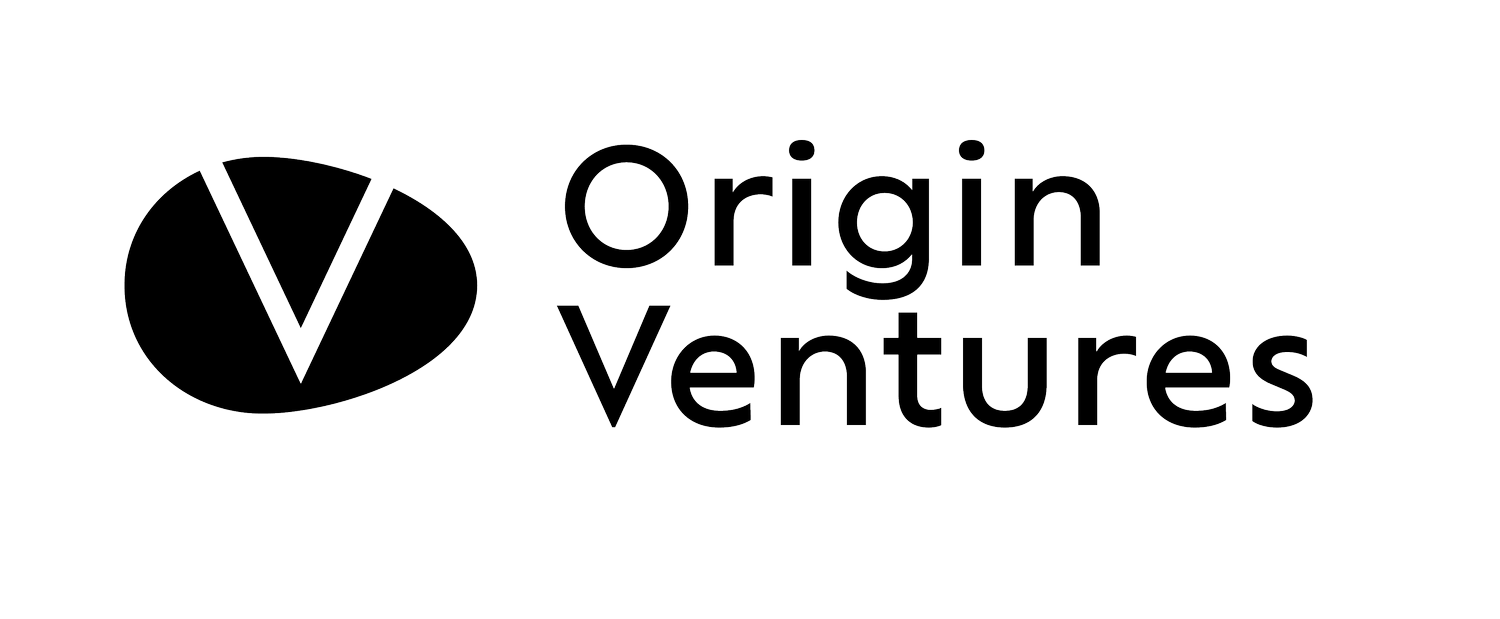An Inside Look at how Venture Capital Firms Make Decisions
Entrepreneurs face substantial challenges raising capital, and waiting on feedback from venture funds makes it worse. While decision-making within venture capital funds is vitally important to the venture-founder relationship, there is little published on how venture firms make decisions. Because Origin Ventures has scaled, we recently re-evaluated our decision-making process, and are revealing some of our research and conclusions.
The venture decision-making process is a black box to many founders, but especially so for women, people of color, and first-time entrepreneurs, who are less likely to know folks in an industry that has classically been white and male dominated. Understanding how decision-making generally works within venture funds may help founders better navigate the fundraising process. We talked with 15 venture funds of varying sizes and scales about decision-making and prepared this guide to help founders. It may also help other VCs looking for guidance on how to design decision-making.
VCs are not great at feedback and transparency
Lots of entrepreneurs walk out of a pitch meeting that seemed to go well and never hear from a VC firm again. Even the most “communicative” firms have lulls in communication to a founder. Understanding how things work may make these lapses more bearable.
It’s worth noting that very few deals get to the formal decision-making step. VCs say no to 99% of deals and most of those “nos” will come before a formal investment committee decision. But for those whose deals do reach the investment committee, the frameworks below may be helpful.
Frameworks for decision-making
After polling various firms, three decision-making frameworks emerged:
Partner checkbook: a general partner (GP) has discretion to write checks on their own without additional approval;
Formal voting with varying levels of complex scoring;
Consensus or supermajority voting
Each one of these approaches has pros and cons, and the right one depends on the dynamics of the partnership. For example, a partner checkbook requires deep trust within a partnership and delivers efficient decision making. But it’s less collegial, and when decisions are not collectively “owned” by a partnership, it can create schisms in a partnership when deals go south.
Consensus, or unanimous, decision-making works well in small, close partnerships. But as firms get bigger, reaching unanimity becomes increasingly arduous and tedious. In fact, it may encourage “average” deals that aren’t offensive to anyone, but have substantially less potential to deliver big returns.
Vetoes or objections from other GPs can sometimes kill a deal in the above scenarios, but these additional voting “features” vary widely between partnerships and are used in conjunction with the above frameworks.
Most firms have a lower bar for smaller deals (relative to the firm’s typical investment) and higher bars for bigger checks and follow-on rounds. For example, a smaller deal may only require a lead partner being an advocate or a simple majority, while a larger deal may require multiple-partner support. Origin many years ago adopted this system distinguishing decision-making between our Seed and Series A deals – we felt that the best seed deals are not obvious and may even seem a bit crazy, so we want to give ourselves license to push through what might seem like a crazy idea to everyone else.
When pitching a fund, founders should inquire about the process early and identify the right partner advocate. It may be hard to pry about the decision-making process, but as founders build a deeper relationship with a firm, this will naturally become more clear. Founders should know what the hurdles/major questions are, and also *who* needs to be convinced. If a principal or junior partner, who has less influence within their firm, is a deal’s advocate, the upside is that person likely has a stronger incentive to get deals approved in order to be promoted. What founders want to avoid is getting deeper into the process only communicating with someone with little or no influence.
For bigger initial checks, or, importantly, for follow-on rounds, firms generally raise the thresholds in the direction of supermajority/consensus, and may have veto thresholds (e.g. a “strong no” from X number of voting members can kill a deal). This tends to come into play more when a round is not a rosy up-round led by a trusted VC firm.
Complex scoring is relevant and in some cases can be the definitive decision on a deal, but can also be more of an afterthought in other firms. Investment decisions can be made as investors debate and persuade each other and conduct diligence together as they feel each other out, prior to any formal voting. However, keeping voting and scoring records is important for posterity as funds (and future Limited Partners, the investors in venture funds) want to measure decision-making by individuals over long periods of time.
Timeline of a decision
Firms hold official “committee” meetings to run through their decision-making process weekly, for the most part. However, there is almost always jockeying and advocacy that happens in hallways and 1:1 conversations which can matter more than formal meetings. In healthy firms, “lead contacts” within a firm will typically know where a partnership stands before the meeting happens.
So, why can’t entrepreneurs get an answer by Monday? Firms may want to conduct additional diligence or take more time to think about a deal. Other deals may take more time than expected during the meeting, and the firm couldn’t consider all of the deals in the pipeline. Founders can combat this by creating urgency around their deal: things like a competing termsheet, an approaching closing, or allocations that are being gobbled up.
The frustrating thing for entrepreneurs is that they don’t know when the diligence ends. But, one thing working in their favor is that firms also want to strike as quickly as possible/first, and don’t want to lose a deal to another firm that happened to decide faster. Investor speed and responsiveness can be the difference between being in the right deal and being shut out. Founders should keep up (reasonable) pressure on VCs during a process.
Stringing along founders may seem like “free option value,” but reputational consequences associated with that strategy can add up over time for venture firms and individual partners.
Will a VC firm share information on decision-making?
Usually not. VC firm decision-making is closely guarded, and entrepreneurs are unlikely to learn the granular details of how a firm makes decisions. But, firm structure and mandate can often be clues into how a firm operates. If a firm is “mega” (multi-billion-dollar AUM, many GPs), it is impossible for everyone to be up to speed on every deal, so the threshold for a first check is very likely the conviction of a few passionate senior folks. Contrast that with a smaller fund, where a higher percentage of investment professionals must support a deal.
What’s the best kind of decision-making framework?
There is no right answer. Firm culture, investment mandate, size of team, generation dynamics, and amount of capital deployed (at the fund and check level) are all relevant.
Mega funds tilt toward “individual GP checkbooks” and will rely on smaller teams to make decisions. Smaller funds enforce more literacy across the whole team, but only to a point. If a firm is too big for consensus or supermajority to be realistic (it’s hard for even a few people to be at the same level of diligence literacy throughout the process), it may make sense to have lower thresholds or create sub-teams which focus only on one type of deal (e.g. direct-to-consumer, SaaS infrastructure, hardware, etc.). If a firm does not adjust its decision-making process as it scales, it can frustrate partners and could lead to 1) lower quality decision-making and/or 2) slower speed, which can hurt in competitive situations.
Regardless of the number of people in a firm, it’s important to balance the advocacy of folks closer to a deal with those who are an arm length or two away.
Deals that sound crazy will face uphill battles gaining investor consensus or supermajority. But firms that never take outlandish bets are unlikely to find the next Uber or Airbnb, which sounded crazy when initially pitched. I believe that the more a firm focuses on consumer-facing startups, the more its decision-making should allow for these “crazy” one-advocate-only bets, since it is more difficult for crazy B2B ideas to break through on a venture timeline. Look at the buyers of B2B SaaS vs. consumer adoption trends: consumers will try almost any app and perform fickle, fleeting tests in search of the next trend or brand. But B2B SaaS buyers do not want to get fired for switching their company to a software infrastructure product that is not around in a year.
Final thoughts
A founder’s main point of contact at a venture firm should clearly and transparently communicate where the firm is in the process, expected timing, and remaining open questions. Founders get a sense for what a founder-investor relationship might look like during the diligence process. Reputations are built over time. If an investor is not transparent and timely with responses, it may be a hint about the kind of investor and/or board member they will be. If a firm has consensus decision-making and a founder hasn’t gotten exposure to most of the partnership, that’s a problem.
Having a sense for the decision-making process a firm uses can help founders better understand likelihood and timing of an investment, and gauge how close to the finish line they are or whether it’s time to focus energy on other venture firms. Knowing what other funds do may help VCs triangulate the right decision-making for themselves.
Thoughts and feedback are welcome!

